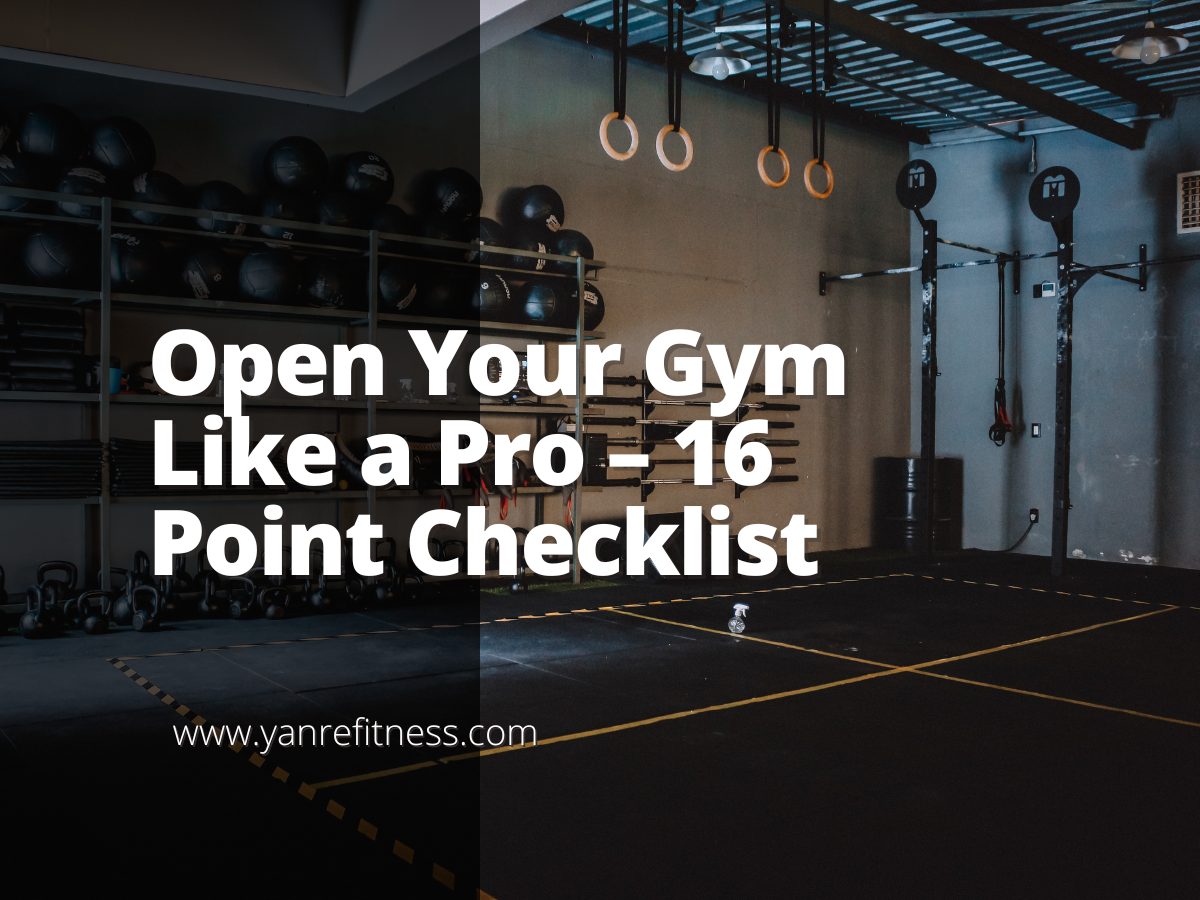So, you have finally reached the point where you are certain that you want to open your own gym.
But, to get to the point where you open your doors will take a lot of your time, effort, and passion. It can take anything from five months to a full year to open your gym.
From the moment you put pen to paper to write your business plan, till the moment you welcome your first gym members can feel like a lifetime.

A lot of time goes into making sure that you tick all the boxes before you open your doors. Stepping into the world of successful business owners takes courage and determination. But to make your journey a little less frustrating and timeous, we have drawn up a checklist. This list will equip you with everything you need to include when opening your own gym.
Table of Contents
- 1. Create a bullet-proof business plan
- 2. Things to include in your business plan
- 3. Establish a Fitness Niche
- 4. Decide on your target market for your gym
- 5. Fantastic Financing
- 6. Start-up Costs
- 7. Securing the best property for your gym
- 8. Gym Layout – the best blueprints
- 9. Premium Equipment
- 10. The ABC of recruiting the best staff
- 11. Magic Marketing
- 12. Cut the Ribbon – Opening Day
- 13. Customer Service
- 14. Best Practices for Gym Maintenance and Cleanliness
- 15. Retaining your members and grow
- 16. Monitoring Your Gym’s Success
- Conclusion
1. Create a bullet-proof business plan
Your business plan will prove to the potential investor or bank officer that you have thought this business through. It will also show that and have done your homework. It will prove that you have taken the time to investigate and plan everything.
Even self-funded entrepreneurs can enjoy benefits by drafting a detailed business plan, an essential step in your gym grand opening checklist. Your business plan will serve as a blueprint to create a solid brand and a long and successful business.
The process of creating a business plan can be overwhelming, but it is worth it. With your business plan stipulating your goals, key targets, and the roadmap to get to where you want to go, you will soon run a successful gym.
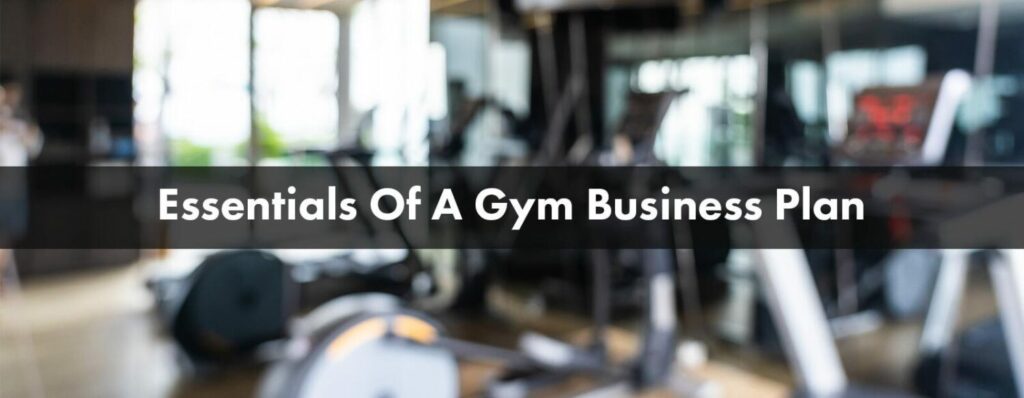
2. Things to include in your business plan
Before we dig deeper into the nitty-gritty of each section, here is the outline of what you must include in your gym’s business plan:
- Executive summary
- Market research and market analysis
- Sales & marketing strategy and forecasts
- Gym services, programs, and products
- Equipment and facilities
- Personnel
- Investor structure and ownership
- Financial forecasts
- Appendix
Executive Summary
If you want to secure a solid financial investment for your gym, then a great executive summary is a must.
The first page of your business plan needs to grab the attention of your investor. If your first page is not interesting enough your investor will lose interest. Your summary must establish why your business is different. This will make your investors continue reading. Alongside showcasing your unique offerings, could be a valuable detail, establishing your commitment to quality. So, your executive summary should entice your investor. It should include a comprehensive overview of your brilliant plan for your gym.
Good advice is to finish your entire business plan, before you complete the executive summary, a crucial element of your gym opening and closing checklist. This will ensure that you include the most essential facts from each section in the summary of your business plan.
Make sure you answer the following questions in your business plan executive summary:
- What makes your fitness club stand out from the crowd?
- What are the core strengths of your business?
- What gap is there in the market that your gym will fill?
- What market data have you collected to support your business concept?
- What is your gym’s competitive advantage?
- What is the bottom line forecast for the next three to five years?
- What are your needs for investment or funding?
Market Research and Market Analysis
If you want to own a successful business in the fitness industry, then you will have to walk the walk and talk the talk. You need to know everything there is to know about how to manage a gym, including insights into business opportunities and high-performing operations. Put the effort into doing your homework on every aspect of the fitness world and the industry, and specifically, your customer base. Don’t forget to delve into industry statistics and the benefits of management software.
Make sure you include details on the specifics of your market location. Look into and stipulate details about your local competition and why you will be able to compete with them. When considering how to enhance your business, provide details on the fitness market in your area. Stipulate to your potential investor, why you will be more attractive to customers.
The market research topic in your business plan, provides details on why you think your business will be successful. It also names the elements you will need to focus on to grow your business into a successful enterprise. So, put enough effort into this section of your business plan. It will serve as a reminder of your competitive edge once you open your doors.
Sales and Marketing Strategy and Forecasts
Any potential funder will most likely skip to this section straight from your executive summary. The sales and marketing strategy and forecast section outlines your business strategy for growth. Make sure you project numbers over the next three to five years.
Pay attention to the following questions, and make sure your strategy addresses each of them:
- Membership types and cost per membership type?
- Sales forecasts?
- Strategy for creating awareness, getting your target market to your gym, and signing them as members?
- What is your USP (unique selling proposition)?
- What are your pre-sale marketing strategies and promo’s?
- What are your post-launch promo’s and marketing strategies to ensure growth?
- What will you do to retain your members?

Products and Services
Now, define the services and facilities you will create for your potential customers. What will your fitness facility look like on the inside? Will it have a specific design style, a small interior design, or a design tailored to your target audience? Will you be looking into catering to a specific demographic or exploring unique business models? Perhaps you’re even considering a community-focused approach or exploring opportunities in smaller communities? How will you entice your members to stay on and invite others to join?
Make sure to list all the services, programs, and products that your fitness facility will have on offer. This could range from examining the associated costs, considering various business models, or exploring niche markets. Include all those that will generate revenue, as well as the ones that your members will get access to.
Facilities and Equipment
When you reach this stage of your business plan, you will have a location pinned down for your business. If you do not yet have a location, do not stress. You can then use this part of your plan to describe your ideal location and facilities.
Describe the look and feel of your gym, in the equipment and facilities part of your business plan. Include details about the benefit of the location. What does the building offer, the size and layout. Also provide details about parking, visibility, and security.
Include listed details on everything your gym will have. Like a swimming pool, sauna, luxury locker rooms and showers.
Also include details on potential to expand, should the business need it in future. Include details on lease contracts, the demographics of the area and why this would be ideal for your target market.
It is also helpful to include a map image or location latitudes to show your investors exactly where your gym’s location is. In this section you will also include a blueprint image or any drawings or architectural plans for the building.

Designing a gym that meets your members’ needs can be challenging, but with careful planning, you can create a space that is both functional and inviting. At YR Fitness, we offer a wide range of high-quality gym equipment and accessories that can help bring your gym to life. Contact us today to learn more and get started on your gym equipment journey!
Personnel
This section of your business plan will cover every aspect of your staffing and hierarchy. In the personnel section you will address things like management and other staff profiles. You will also touch on salaries, wages and benefits. and the staff structure of your business.
Include the details of your experience and expertise in your business plan. Add this along with the other management biographies. Also provide details and an organizational plan to show the position and need for all non-management staff.
Because labor will be the biggest expense apart from your rent or mortgage, make sure you pay attention to the costs of each position, a critical aspect of your opening a gym checklist. Include details on wages and salaries, commissions, allowances, and benefits. Keep in mind that your salary will also fall into this section if you will be managing the gym yourself.
Investor Structure and Ownership
This section of your business plan will include all the legal aspects of your business. Information like the structure of your business registration, i.e. is it a Sole Proprietor, Partnership or another entity?
This section will also tell your potential investors how much funding you are looking to raise. And what the potential investment will buy them in return.
Financial Projections
The Budget and financial projections section of your business plan will most likely take up the most of your time. And it must be so! This section is where you convince your potential investors that your business idea will turn profitso. You also need to show them that you plan to grow your business to become financially stable.
Make sure you create detailed financial projections. Include details on all your forecasted income revenue streams and all expenses.
Include detailed income statements, cash flow projections, and balance sheets. Put together a detailed best-and-worst-case scenario forecast over the next three years. Provide comprehensive context to each income and expense line. This is important for your funders to understand what your start-up costs are. Also what your monthly running expenses and salaries are. And conclude with what will make up your profits every year.
Appendix
Last, but not least, your appendix section of your business plan. This will include any supporting documentation for your business plan.
These can include items like:
- Blue-prints of your premises
- Architectural drawings
- Location Maps
- Resumes for your team
- Logo, flyer and brochure designs
- Potential promotions
3. Establish a Fitness Niche
With healthy living trends on the increase, there is an ever-increasing demand for quality fitness facilities. And a high demand for personal trainers, coaches, and nutritional foods. The growing market holds potential for substantial earnings and competition in the fitness industry.
One of the most celebrated ways to beat the competition in this competitive industry, is to establish one or two niches for your gym.
Although a commercial gym caters for every most of the fitness needs out there, you do not have to focus on pleasing everyone. A better way to get feet through your doors is by marketing one or two key facilities that your gym will offer. Focus on what the competition does not have. Like a heated pool with expert swimming instructors or a specialist cycling and spinning department.
By establishing a niche or two for your gym, you will become known as an expert service provider in those areas. You will draw more members and grow your business in the long run.
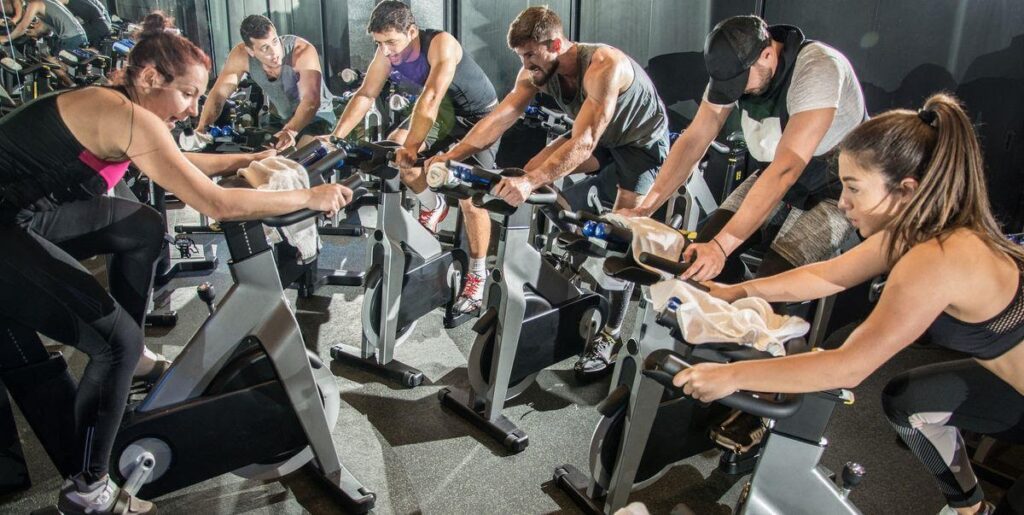
4. Decide on your target market for your gym
The health and fitness industry will always be a competitive one. If you want to stay ahead of the competition and grow your business, it is a good idea to focus on specific markets, or two.
The world of gym has changed from only focusing on middle-aged men who want to look good. It has since evolved to provide expert training and fitness solutions to men and women from all age groups and body sizes.
If you focus on a specific target market, e.g., women who want to lose weight, you will draw hundreds of potential customers. And you will open your facility to a diverse clientele. To help you establish a target market, look at some of the following points:
- Area demographics
- Attitudes, behaviors, and interest of the people in and around your location
- Key characteristics of specific age and sex groups
- Buying and marketing preferences of these target groups
- Key needs within the target groups
5. Fantastic Financing
When compared to other SMEs it is a bit more difficult to secure investments and funding for a gym start-up.
Gyms need professional staff, and quality fitness equipment. Add to the list your showers, saunas and unique building modifications. It is advisable to invest as much of your own start-up capital in your business as possible to maintain a majority share. But if you do need to find extra funding we have listed five sources for funding below:
- Corporate Investors
- Angel Investors
- Bank Loans
- Venture Capital
- Micro-Financing
Corporate Investors
These are businesses who provide financial and operational support to help small businesses get off the ground.
Corporate investors do not only invest funds in your start-up, but they will also provide you with operational expertise. As well as expert support to ensure that you follow through and are successful. They come on board from the first moments and will support you throughout but will demand a certain percentage of your shares.
This way, they do not only protect their investment in your start-up, but they also ensure your success.
Angel Investors
These are successful business owners who invest their personal earnings in start-up businesses. In exchange for their financial boost into your business they will take partial ownership of your business.
Bank Loans
Another option you can consider is old-school financing like a bank loan. Should your business plan be good enough, the bank will give you a loan to fund your start-up business. Loans have steep interest rates and stringent lending criteria. Although they are strict and derive an interest in their investment, they are the safer, more stable option of funding.
Venture Capital
Venture capitalists are a great choice if you have already started your gym and are planning to expand your brand.
Venture Capitalists are much the same as angel investors. The only difference is that they act as a company and not a sole person. They are also focused on the returns they will get for investing in your business. And they will be involved in the day to day running of your business to ensure that their investment brings in the profits.
Micro Financing
Micro financing should only be used if you struggle to get funding elsewhere. Although funding here might be easier to get, the interest rates are higher than bank loans and the eligibility criteria is very steep.

6. Start-up Costs
The question all start-up gym owners ask is, how much it will cost to start their gym? The answer to this question is never simple. You will have to determine the size and type of gym you want.
A studio gym can cost anything from $50, 000 to start while a medium-sized gym could run up $150, 000 in start up expenses. We divide start-up expenses into two main categories: Once-off costs and ongoing costs. We look at the two in more detail below.
Once-off costs
The initial start-up expenses for your gym might not be cheap but ensuring a solid foundation will benefit your business in the long run. There are several one time costs that your start-up might incur, but not all might be needed.
- Property rental – This will depend on the area and size of your gym.
- Quality gym equipment – This is vital to the success of any gym, and you might also consider exploring international sourcing options.. Speak to YR Fitness now!
- Fitness Certifications – Make sure your staff are professional and certified as trainers.
- Business licenses – Ensure you have a registered business with paid up license fees.
- Legal fees – Ensure you have the help of a legal aid to navigate contracts, insurance, etc.
- Insurance – This is a legal need. Ensure your business and equipment with the appropriate coverage.
- Building modifications – You might have to remodel the premises to include a shower or sauna.
- Computers and systems – To operate , you will need a solid IT system.
- Sign boards – Signage is the first face of your gym. Spend time on the design and material used.
- Uniforms – You want to look professional, so invest in staff uniforms to create a good image.
- Office supplies – You would need chairs, desks, paper, printers, towels and many more.
- Gym merchandise – you might want to offer branded accessories as an extra income.
- Advertising – To announce your opening, you would need to get the word out, and effective marketing strategies can play a significant role in attracting potential members.
- Website design – another key part to your professional image is a professional website.
- Cash flow – make sure you have operating petty cash on hand for small, unforeseen expenses.
Ongoing costs
Ongoing costs will vary depending on the size and type of gym you are starting. We have listed some of the occurring costs you might experience below:
- Rental or mortgage payments – this is the payment to secure your premises.
- Monthly Insurance – This will cover your business, equipment, and any risk.
- Staff salaries – This will include your own salary and that of all your staff.
- Utilities – Includes expenses like water and electricity.
- Cleaning supplies – You will need daily cleaning of equipment. This cost is a must.
- Maintenance – You will need to maintain your building and equipment monthly.
- Phone and Wi-Fi – to stay connected you would need a phone and good internet services.
- Marketing – You will need to continue advertising if you want to grow your business.
7. Securing the best property for your gym
When you are venturing out to find a property where you can open your first gym, consider the following points:
- Location
- Age of the building
- Building finishes
- Accessibility
- Parking
- Safety and security
8. Gym Layout – the best blueprints
Planning the layout of your gym can be a challenging task. Luckily, there are great designs and tools out there that can make this task easier.
One such tool is a program called a planning tool. This tool will help you to create expert plans and figure out the most effective way to design the interior arrangement of your fitness facility. It even allows you to determine, select, draw, and place the exercise equipment you will have on your premises
Great tools like these will help you to create a good image of the look and feel of your gym.
9. Premium Equipment
When it comes to working out, the type of equipment used in a gym is very important.
To ensure you stay ahead of the curve and on top of your game, invest in good quality gym equipment. Find a supplier that can provide you with durable equipment at wholesale prices.
At YR Fitness, quality is our pride. Speak to us at YR fitness today! We are ready to assist you with everything your commercial gym will need.

10. The ABC of recruiting the best staff
The trainers and fitness staff you use at your gym will either support your success or damage your business. It is so vital that you take the time and put in the effort to hire the right team to support your business.
It does not matter how amazing your facilities are. Or how great your equipment is, if your staff leave a bad impression on your members it can damage your business. The pressure is on you to ensure that you hire a team that will drive your business vision into the future.
When hiring your team, look at the following guidelines to assist you with finding the superstars!
- Know what you need in each job profile
- Test your candidates to see how much they know and what their capabilities are
- Look for people with great people skills
- Look for candidates who can take initiative and think outside the box
- Look for candidates that has energy and drive
- Always verify candidate backgrounds and references
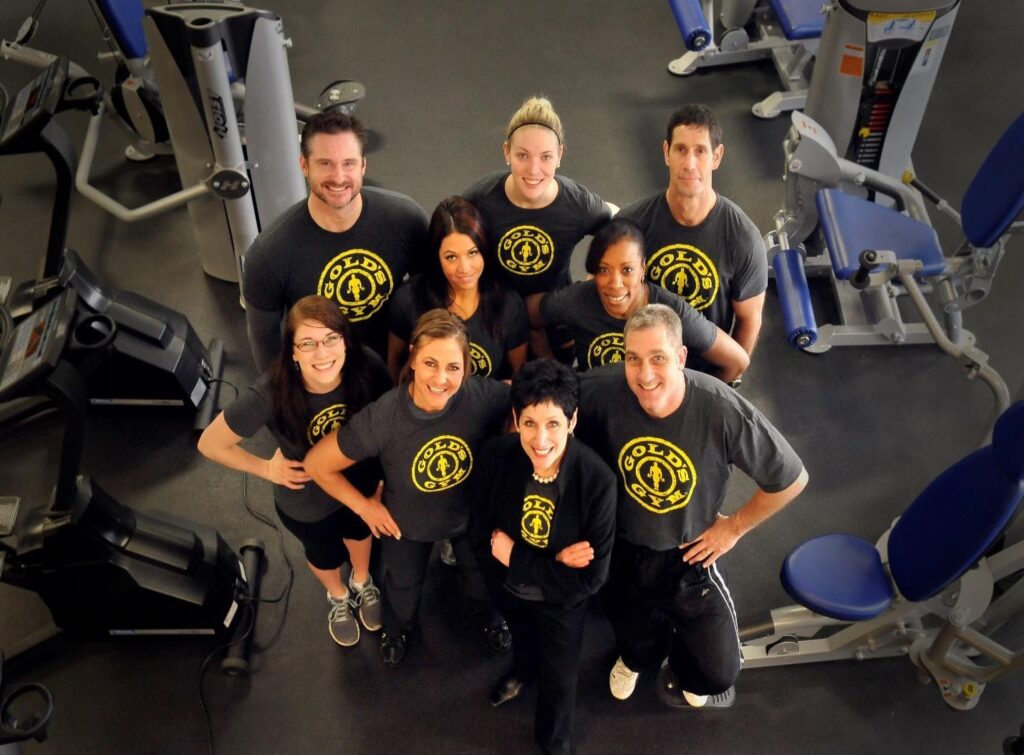
11. Magic Marketing
In today’s day and age, there are numerous creative strategies you can use to promote your gym and attract potential customers. When it comes to advertising and promoting your fitness and health business, the possibilities are vast. There are remarkable campaigns that you can run, all of which will attract customers to your facility.
Social media campaigns – launch media campaigns on social platforms like Facebook, Instagram, and Twitter. This will boost your membership and give you second-by second feedback on what your followers and members think about your gym.
Corporate challenges – launch a corporate challenge inviting businesses to a fitness marathon. Provide a prize to the winning corporate team like one-month free spinning classes for the entire team.
Membership anniversary promotions – Offer anniversary promotions to your loyal members to celebrate their long-standing relationship with your brand.
Free test run – Offer a free trial to your facility to get potential members to try out your gym. This has a 90% success rate and guarantees new member sign ups.
Fitness challenge – Host a public fitness challenge that allows all members of the community to enter. This will not only create brand awareness but will invite potential members to sign up.
Sign up discount promotions – Offer discount promotions to members who sign up as a family or sign up on an annual contract.
12. Cut the Ribbon – Opening Day
Everything you have done up to this point will determine the success of opening day for your gym. You have ticked all the boxes on your checklist, the only thing left is to make sure you open your doors with a bang!
Putting some effort into the opening day of your gym will give you the chance to welcome members that have signed up before the opening. It will also invite potential new members.
It will give the local community the opportunity to walk through your facilities. They can meet your staff and discuss your wonderful membership packages and all your gym has to offer.
So put some energy and thought into how you want to do it and exactly what you want to do for your grand opening day. Planning and investing in this day will only benefit your business in the future.

13. Customer Service
Did you know that providing excellent customer service can make all the difference in retaining members? According to Salesforce (2022), a whopping 94% of consumers are more likely to continue buying from a brand that provides a positive customer service experience. In fact, 80% of consumers are willing to forgive mistakes made by a company if they receive exceptional customer service. As a gym expert, it’s important to prioritize customer service to build long-lasting relationships with your members and promote positive word-of-mouth. By going above and beyond to exceed their expectations and promptly addressing any concerns or complaints, you can foster loyalty and drive business success.
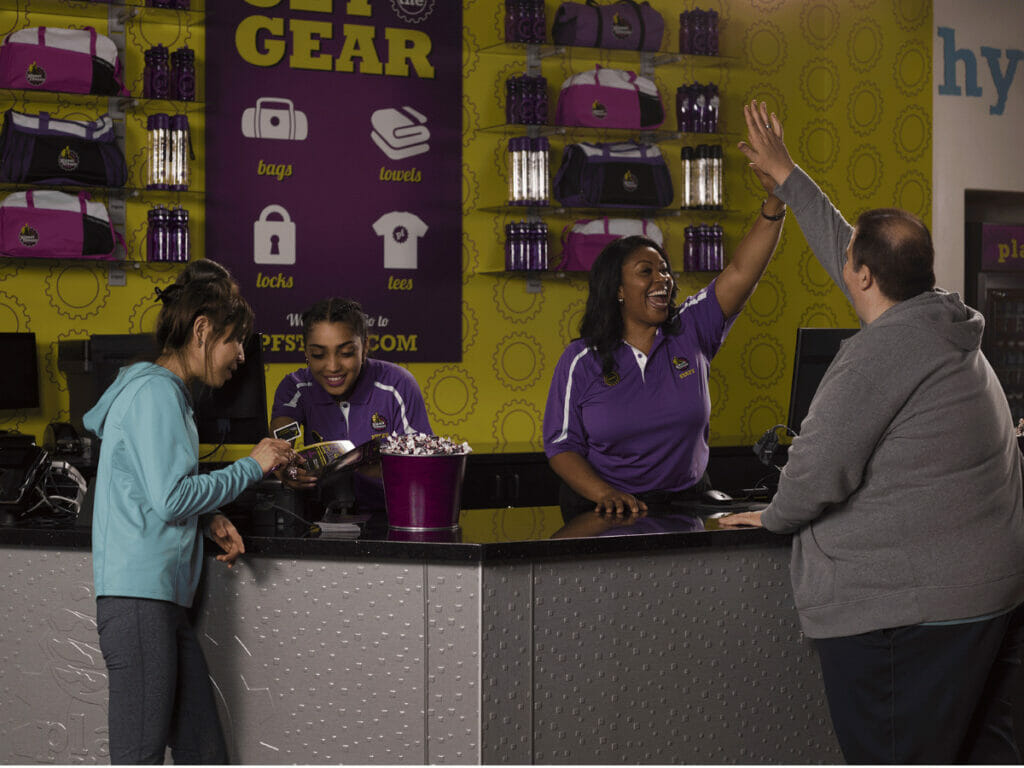
Importance of Customer Service
When I was running my own gym, I made it a priority to address any gym problems and provide personalized attention to each of my gym members, whether it was through customized workout plans or responding promptly to their feedback. This dedication to customer service helped me build a loyal following and establish a positive reputation for my gym in the community. Exceptional customer service is vital in the gym world, and here are the reasons why:
- Enhance member satisfaction
- Build loyalty
- Set gym apart from competition
- Retain existing members
- Attract new clients
- Positive word-of-mouth
- Long-term success
Best Practices for Providing Exceptional Customer Service
Drawing from my personal experience as a gym expert, I can attest that providing exceptional customer service is crucial for success in the fitness industry. When running my own gym, I made it a priority to respond promptly to gym members’ inquiries and feedback, address any concerns or complaints respectfully, and exceed expectations wherever possible. Here are some the best practices to consider:
- Warm, friendly greeting for every member
- Attentive, active listening to member concerns
- Efficient, effective problem-solving
- Consistent, personalized follow-ups
- Regularly gather member feedback
- Implement staff training programs
- Maintain a clean, inviting facility
- Celebrate member achievements and milestones
14. Best Practices for Gym Maintenance and Cleanliness
Best Practices for Gym Maintenance and Cleanliness
In my own gym, I made sure to prioritize regular facility maintenance and upkeep, whether it was by wiping down equipment after each use or regularly inspecting and addressing any issues with machines. Ensuring a safe environment was paramount, and by taking these measures, I aimed to minimize the risk of accidents for my clients. By creating a clean and safe environment for my clients, I was able to build a positive reputation for my gym and foster a loyal gym member base. Tips for maintaining a clean and well-kept gym:
- Establish a Regular Cleaning Schedule: Assign tasks to staff members and ensure a consistent routine is in place to cover all areas.
- Deep Clean Equipment: Sanitize machines, dumbbells, and other workout gear frequently to prevent the spread of germs.
- Inspect Machines and Facilities: Regularly check for wear and tear, and promptly address any issues to ensure member safety and equipment longevity.
- Ventilation and Air Quality: Ensure proper air circulation and invest in air purifiers to maintain a fresh, healthy atmosphere.
- Organize workout spaces: Keep equipment tidy and well-organized to promote a pleasant workout experience.
- Manage locker rooms and restrooms: Pay special attention to these areas, as cleanliness is crucial for member comfort and hygiene.
- Communicate expectations: Encourage members to wipe down machines after use and provide adequate cleaning supplies for their convenience.
Importance of Gym Maintenance and Cleanliness
Keeping your gym clean and well-maintained is crucial for the health and safety of your clients. A dirty or poorly maintained gym can lead to the spread of germs and bacteria, causing illnesses and infections. Let’s explore the importance of keeping your fitness facility in top-notch condition:
- Member Satisfaction: A clean, well-maintained gym creates a pleasant workout environment, leading to happy, loyal members.
- Health and Safety: Regular cleaning and maintenance help prevent the spread of germs and reduce the risk of injuries caused by faulty equipment.
- Equipment Longevity: Proper care and upkeep of machines and gear extend their lifespan, saving you money in the long run.
- Positive Reputation: A spotless gym reflects your commitment to quality, boosting your gym’s reputation and attracting new members.
- Enhanced Workout Experience: A well-organized, clutter-free space allows members to focus on their workouts and enjoy an optimal fitness experience.
Tips for Keeping Your Gym Clean
As a gym expert and fitness enthusiast, I’ve personally witnessed the impact that proper disinfection and cleanliness can have on overall client satisfaction. In my own journey, I found that keeping a gym clean by creating a regular schedule for facility and maintenance was crucial. Let me share a few tips that have worked for me, helping you create a welcoming and hygienic environment for your clients.
- Strategizing a Regular Cleaning Schedule : To maintain a spotless gym, implement a consistent cleaning routine that targets equipment, floors, and facility areas. For instance, a well-planned schedule ensures no spot is missed, enhancing the overall cleanliness and appeal of your gym.
- Training Staff on Proper Cleaning Techniques: Equip your staff with the knowledge and tools to maintain a clean gym by providing comprehensive training on cleaning methods and protocols. A well-trained team is essential for upholding hygiene standards and meeting customer expectations.
- Stocking Up on Quality Cleaning Supplies: Invest in high-quality cleaning products and tools to make the cleaning process more effective and efficient. Having the right supplies on hand makes it easier for staff to maintain a sanitary environment that meets your clientele’s needs.
- Encouraging Member Hygiene Etiquette: Promote good hygiene among gym-goers by providing guidelines and reminders for wiping down equipment, washing hands, and using sanitizer. A clean gym culture benefits everyone and contributes to a healthier, more enjoyable workout experience.
- Implementing Ventilation and Air Purification: Ensure fresh air circulation and minimize odors by investing in a proper ventilation system and air purifiers. For example, a well-ventilated space not only smells better but also provides a more comfortable environment for both clients and staff.
- Conducting Regular Cleanliness Inspections: Regularly inspect your gym for cleanliness, identifying areas that may require additional attention or improvement. Staying proactive with inspections helps maintain high standards and shows your commitment to providing a clean, inviting commercial gym space.
While keeping the gym clean is essential, it’s equally important to invest in high-quality gym equipment like YR Fitness products. As a reputable gym equipment manufacturer, they ensure that your gym members enjoy a top-notch workout experience, elevating your gym’s overall appeal and success.

15. Retaining your members and grow
Having a solid and loyal membership base is always good for business. The income you receive from membership fees will cover more than 80% of your revenue, if not more. It is thus vital to ensure that you keep your members. Also that you sign-up new members monthly to grow your income and profits as well as your brand.
The question is, how do you continue to keep your gym members engaged? The answer is simple: through ongoing communication with your dedicated members. If you talk to your loyal members, they will tell you why they joined your gym in the first place and why they keep coming back every time.
Also invest time and effort in talking to your members. They might mention suggested improvements or services that you can provide that will make their experience a better one. Your gym members have the keys to successful growth of your gym. If they are happy and taken care of, they will invite other members of the community to sign up.
If you know why they joined and what makes your gym unique, then copy and paste the formula for a winning retainer recipe.
16. Monitoring Your Gym’s Success
From my experience as a gym expert, I understand the importance of keeping a close eye on your gym’s performance to ensure continued growth and success.
One common question that many entrepreneurs have is, “is opening a gym profitable?” Let’s discuss some key factors to consider when monitoring your gym’s accomplishments, and explore this essential question.

Tracking Key Performance Indicators (KPIs)
Tracking Key Performance Indicators (KPIs) is essential for understanding your gym’s success. It helps to identify areas of growth and improvement by measuring data such as membership sales, retention rates, revenue, and other relevant metrics.
Tracking KPIs is crucial for measuring the success and performance of a gym, allowing for data-driven decision-making and continuous improvement. It helps identify areas of growth, monitor membership sales, retention rates, revenue, attendance, customer satisfaction, and utilization of services, ultimately leading to informed strategies and enhanced member experience. This table shows the significance of tracking Key Performance Indicators (KPIs) in a gym, as it enables understanding of success, identification of growth areas, and optimization of operations for enhanced performance and member satisfaction.
Purpose | To understand the success and performance of the gym by tracking relevant KPIs. |
Benefits | 1. Identifies areas of growth and improvement within the gym. 2. Provides insights into membership sales, retention rates, and revenue. 3. Allows for data-driven decision-making to optimize operations and strategies. |
Key Performance Indicators (KPIs) | 1. Membership sales: Tracking the number of new memberships acquired. 2. Retention rates: Measuring the percentage of members retained over time. 3. Revenue: Monitoring the financial performance and income generated. 4. Attendance rates: Recording the frequency of member visits to the gym. 5. Customer satisfaction: Assessing member feedback and satisfaction levels. 6. Personal training uptake: Tracking the utilization of personal training services. 7. Group class participation: Monitoring the participation rates in group fitness classes. 8. Facility utilization: Evaluating the usage of gym equipment and facilities. |
Importance | 1. Enables performance evaluation, goal setting, and strategic planning. 2. Provides insights into the effectiveness of marketing and operational strategies. 3. Helps in identifying areas of improvement and optimizing member experience. |
Making Adjustments as Needed
As a gym expert, my personal journey has taught me the immense value of adapting to KPIs in order to thrive in the fitness business. Through careful analysis of these metrics, I’ve managed to pinpoint opportunities for growth and make timely adjustments. This hands-on experience has played a crucial role in my success and reinforced the importance of leveraging KPIs for any gym’s continued progress.
Evaluating and Adjusting Your Plan
In the dynamic fitness industry, regularly evaluating and adjusting your plan is crucial. Partnering with YR Fitness, a leading gym equipment manufacturer, helps you adapt to ever-changing market conditions and client needs, ensuring your commercial gym remains competitive and successful.
Conclusion
Opening a gym can be a challenging and daunting task if you do not have a checklist handy. Planning the opening of your gym, including how to open a gym franchise, according to a detailed checklist will ensure that you do not miss a beat. And ensure that you and your team meet all the necessary requirements for your business to operate, including effective gym marketing strategies.
With all the tools available, our solid checklist and a great team to support your vision, you are guaranteed to open your gym like a pro. For expert guidance and support in opening your gym like a pro, contact us at YR Fitness today. Let’s make your fitness dream a reality!
Related articles:
